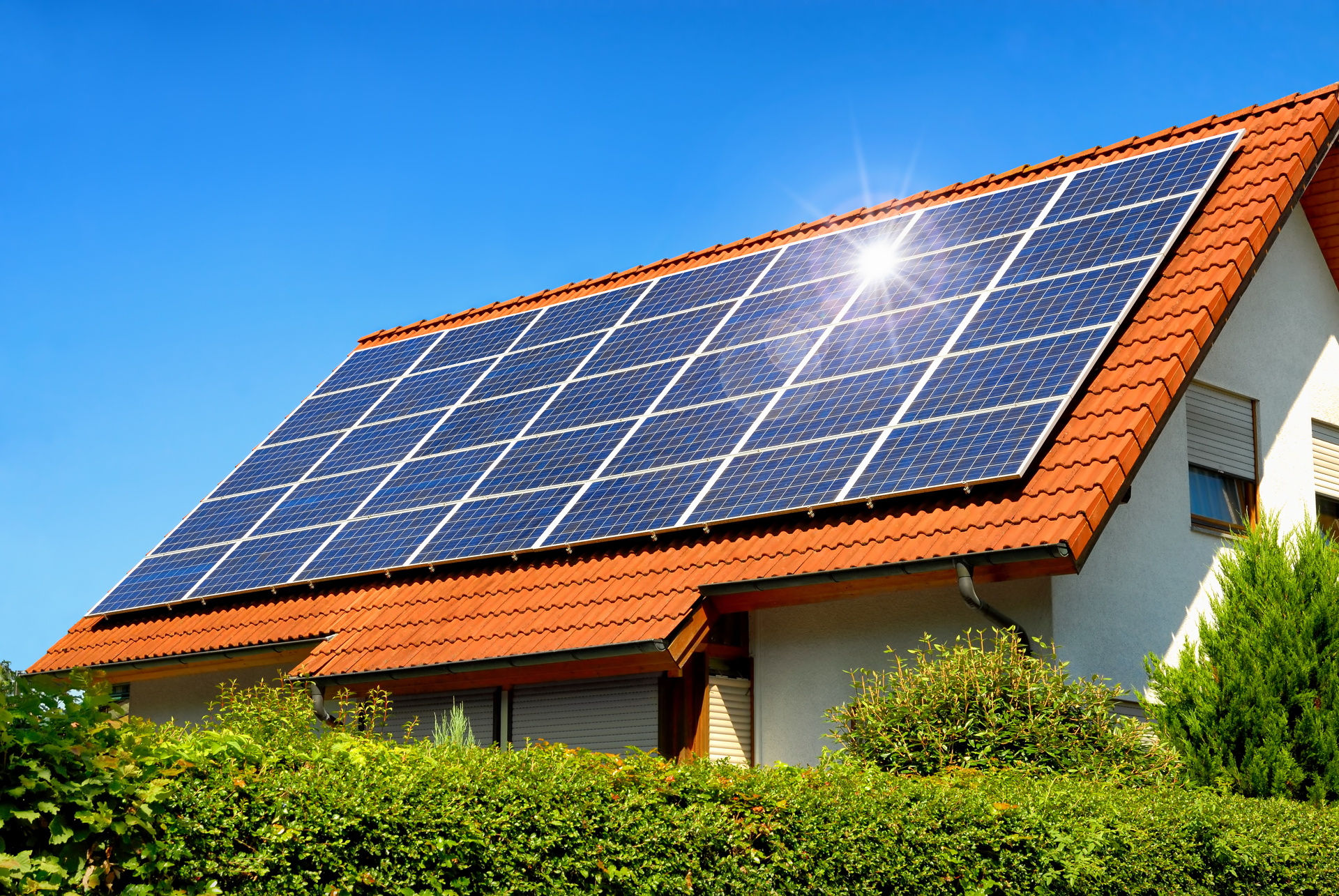Solar Power Solutions For Homes: How to Select the Best Solar Panel Installation Service for Lumina Solar
Solar Electric System For Home: Renewable Energy Systems Harness Sunlight To Create Tidy Electricity For Residences And Companies
History and Advancement of Solar Panels
Have you ever stopped to question how an easy piece of technology turned sunshine into electrical power? The journey of solar panels is absolutely nothing except a modern-day impressive, woven with minutes of curiosity, development, and a dash of serendipity. It was back in 1839 when Edmond Becquerel, a young French physicist, observed that particular materials produced little electric currents when exposed to light. This discovery planted the seed for what would eventually end up being the photovoltaic revolution.
Early Turning Points in Solar Innovation
- 1876: William Grylls Adams and his trainee Richard Evans Day demonstrated that selenium might generate electricity from light, a precursor to modern-day solar cells.
- 1954: Bell Laboratories revealed the first useful silicon solar battery, which transformed sunlight to electricity at about 6% efficiency.
- 1960s: Solar panels found a specific niche in powering satellites, showing their worth in space exploration.
Isn't it remarkable how something created for orbit eventually discovered its way to roofs worldwide? The trajectory of photovoltaic panels from speculative curiosities to dependable energy sources mirrors the wider dance of human resourcefulness and environmental awareness.
Secret Developments That Shaped Solar Panels
| Year | Innovation | Impact |
|---|---|---|
| 1970s | Thin-film solar cells presented | Lowered material expenses, increased flexibility |
| 1980s | Improvements in silicon pureness | Boosted effectiveness and life expectancy |
| 2000s | Advancement of multi-junction cells | Enhanced energy conversion rates significantly |
Show for a moment: how did these incremental improvements modify the landscape of renewable resource? By continuously pushing borders, solar technology changed from a specific niche development into a worldwide powerhouse. The efficiency and affordability of photovoltaic panels surged, igniting a wave of adoption that appeared impossible simply a couple of years before.
Personal Insight: A Sunlit Epiphany
I remember checking out a little rural village where the installation of photovoltaic panels stimulated a profound modification. Kids studied under intense LED lights powered entirely by the sun. It struck me-- this technology didn't simply convert photons; it converted hope into tangible development. Isn't that the ultimate power of solar energy?
In the grand tapestry of energy history, solar panels stand out as a beacon-- a testament to human resolve and the ruthless pursuit of cleaner, sustainable futures. From the curious experiments of 19th-century scientists to the sleek, efficient arrays we see today, the story of solar panels reminds us that in some cases, the brightest ideas begin with a simple ray of light.
Revealing the Spectrum: Types of Photovoltaic Panel Technologies
Ever wondered why some photovoltaic panels gleam like glass while others resemble dark, matte tiles? The secret lies deep in their technology. From crystalline silicon to thin movies, photovoltaic panels been available in an array of designs, each with its quirks and efficiencies.
Crystalline Silicon Panels: The Workhorse of Solar
Monocrystalline and polycrystalline panels control the landscape. Monocrystalline, made from a single silicon crystal, uses the highest efficiency rates-- sometimes going beyond 22%. This comes at a cost: their production procedure is energy-intensive. Polycrystalline panels, on the other hand, are made from several silicon pieces melted together. They sport a characteristic speckled blue color and usually fall a little behind in effectiveness, hovering around 15-17%. Yet, they frequently cost less in advance.
Think of setting up a monocrystalline selection on your roof; the streamlined black panels take in the sun's rays like a sponge. However what if your roofing system's shape or shading isn't ideal? Polycrystalline panels might manage partial shading better, a nuance frequently neglected.
Thin-Film Solar Panels: Versatility Meets Innovation
Thin-film innovation departs from the bulky silicon wafers and instead layers photovoltaic product on substrates like glass, plastic, or metal. Cadmium telluride (CdTe) and copper indium gallium selenide (CIGARETTES) are popular thin-film products providing light-weight and versatile options.
- Thin-film panels tend to perform better in low-light or high-temperature environments.
- They're less effective overall-- typically around 10-12%-- however their versatility can be a game-changer for unconventional installations.
- Because they're lighter, they're often chosen for roofs not able to support heavy loads.
Emerging Technologies and the Road Ahead

Perovskite solar cells, often hailed as the next huge leap, have stirred enjoyment for their potential to reach efficiencies comparable to silicon panels however at a portion of the cost. Yet, their durability remains under analysis, akin to an appealing novel whose ending is still unwritten.
Have you ever grappled with the aggravation of your solar output dipping suddenly? Often, the offender isn't dirt or shading however the panel's intrinsic response to temperature level fluctuations. Crystalline silicon panels tend to lose efficiency as temperatures soar, often by about 0.5% per degree Celsius above 25 ° C. Professional Tips for Choosing the Right Technology
- Evaluate your environment: Is your area prone to high heat or frequent cloud cover? Thin-film panels may outshine silicon in these conditions.
- Think about setup restraints: Restricted roof space? Monocrystalline panels pack more power per square foot.
- Assess long-term resilience: Silicon panels have years of tested reliability, while new technologies like perovskite are still showing their mettle.
- Factor in looks and combination: Some house owners value the streamlined black look of monocrystalline panels, while others prefer the less obtrusive thin-film choices.
| Technology | Typical Effectiveness | Strengths | Factors to consider |
|---|---|---|---|
| Monocrystalline Silicon | 20-22% | High performance, smooth look | Higher production energy, expense |
| Polycrystalline Silicon | 15-17% | Lower cost, much easier production | Less effective, blue speckled appearance |
| Thin-Film (CdTe, CIGS) | 10-12% | Lightweight, versatile, excellent in shade | Lower effectiveness, shorter life expectancy |
| Perovskite (Emerging) | 15-20% (laboratory scale) | Possibly low cost, high effectiveness | Stability and longevity issues |
Setup: The Unsung Hero of Solar Performance
Imagine planting a seed in rocky soil and anticipating a worthwhile tree. That's what solar panel setup seems like when done without precision. The angle and orientation of your panels can make or break the energy harvest. Panels angled incorrectly might indulge in sunshine, however they will not convert it efficiently.
South-facing roofing systems typically absorb the most sun in the northern hemisphere, however what about roofings that deal with east or west? Tilt adjustments can compensate, but not completely. The difference in between 15 degrees and 30 degrees tilt can quickly translate into a 10-15% drop in annual output.
Pro pointer: When setting up, prevent shadows cast by chimneys, trees, or even neighboring buildings. Simply a little shadow on one cell can lower the whole panel's output dramatically. Remember, solar cells are like dominoes; if one falls, the rest follow.
Secret Setup Aspects Impacting Efficiency
- Panel Orientation: South-facing is ideal in many areas but think about geographical specifics.
- Tilt Angle: Adjust seasonally or repair at the typical ideal angle for your latitude.
- Shading: Even intermittent shadows can trigger disproportionate energy loss.
- Roofing Material: Reflective surface areas can increase panel temperature levels, minimizing effectiveness.
- Ventilation: Panels carry out best when air flows below, preventing overheating.
Performance Elements: Beyond the Surface
Heat is a sly burglar. Heats break down photovoltaic efficiency. Panels ranked at 25 ° C can lose 0.5% performance per degree above that. In scorching summertimes, that theft accumulates, making a shaded however cooler panel outshine a hotter, "perfectly lit" one.
Ever noticed how a freshly installed variety appears to hum with guarantee however slowly dips in output? Dust and grime do their part, however so does intrinsic degradation. Panels lose about 0.5% to 1% efficiency every year, a subtle decrease that compounds silently.
Advanced Tips for Taking Full Advantage Of Efficiency
- Microinverters: Usage these to guarantee that shading or malfunction in one panel does not drag down the whole system.
- Bypass Diodes: They help keep output by separating shaded or broken cells within a panel.
- Routine Monitoring: Track output daily to catch dips brought on by unanticipated elements like bird droppings or debris.
- Optimize Electrical Wiring: Thicker cables decrease resistance loss, specifically in bigger systems.

| Factor | Effect on Performance | Professional Pointer |
|---|---|---|
| Panel Temperature | 0.5% efficiency loss per ° C above 25 ° C | Install panels with air flow underneath for cooling |
| Shading | As much as 80% output reduction from partial shading | Cut surrounding foliage regularly |
| Orientation & & Tilt | 10-15% annual output variation | Change tilt seasonally if possible |
| Wiring Resistance | 2-5% energy loss in poorly sized cables | Usage properly evaluated cable televisions |
Ecological Impact and Advantages of Solar Panels
Have you ever paused to consider how the sunshine recorded on your rooftop transforms into clean, sustainable energy!.?. !? Solar panels imitate silent guardians against the relentless march of carbon emissions, turning photons into power without a whisper of contamination. The ecological footprint of solar innovation is staggeringly lighter compared to nonrenewable fuel sources, but it's not without its complexities.
One typically ignored aspect is the life process analysis of solar panels-- from raw product extraction to end-of-life disposal. Mining for silicon and rare metals can stir environmental ripples, yet advances in recycling innovations guarantee to close the loop better than ever before. Envision a future where photovoltaic panel waste ends up being the raw product for Solar Power Home Installation the next generation of cells-- circular and sustainable.
Secret Environmental Benefits
- Decrease in greenhouse gases: Photovoltaic panel produce zero emissions throughout operation, drastically cutting the carbon footprint of electrical power generation.
- Water conservation: Unlike traditional power plants, photovoltaic panels require very little water, reducing tension on water communities.
- Air quality improvement: By displacing coal and gas plants, solar power lowers hazardous toxins that contribute to smog and respiratory health problems.
- Land use effectiveness: Integration of solar panels on roofs and urban spaces decreases interruption to natural habitats.
Unforeseen Insights
Did you understand that the energy payback time for contemporary solar panels has diminished dramatically? Early models needed years to offset the energy purchased their manufacture. Today, some panels break even in under 2 years, a testimony to leaps in manufacturing effectiveness. This implies the environmental "expense" is repaid faster, leaving decades of clean energy ahead.
Determining the ecological trade-offs needs a nuanced eye. The use of dangerous chemicals throughout production needs strict controls-- ignored in popular stories however vital to sustainable implementation. What if we utilized bioplastics or organic photovoltaics to soften this effect further? The horizon is large open for development.
Tips for Optimizing Environmental Advantages
- Select panels with high-efficiency rankings to produce more power per square meter, lowering material usage.
- Consider the positioning and angle thoroughly-- shadowing and dirt build-up can silently wear down ecological gains by reducing output.
- Engage with licensed recyclers who specialize in solar components to make sure accountable end-of-life handling.
- Track and enhance your system's performance with wise tracking tools to capture dips in performance early.
| Environmental Aspect | Solar Panels | Coal Power Plants |
|---|---|---|
|
CO. 2Emissions. |
Near no functional emissions | High emissions per kWh produced |
| Water Usage | Minimal water utilize | Considerable water usage for cooling |
| Land Effect | Low, specifically on rooftops | High, typically needing mining and waste disposal |
| Waste Generation | Recyclable elements increasing | Hazardous byproducts requiring disposal |